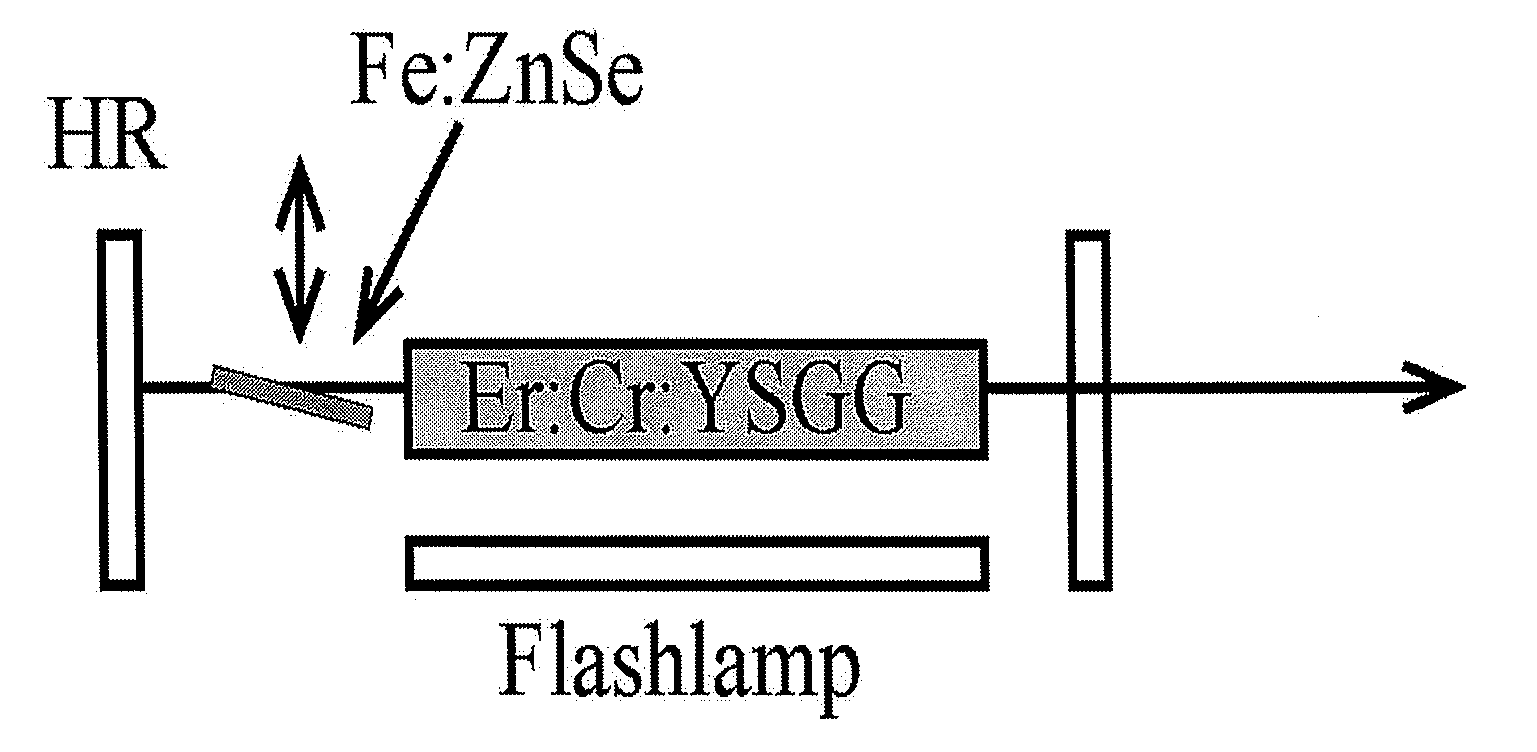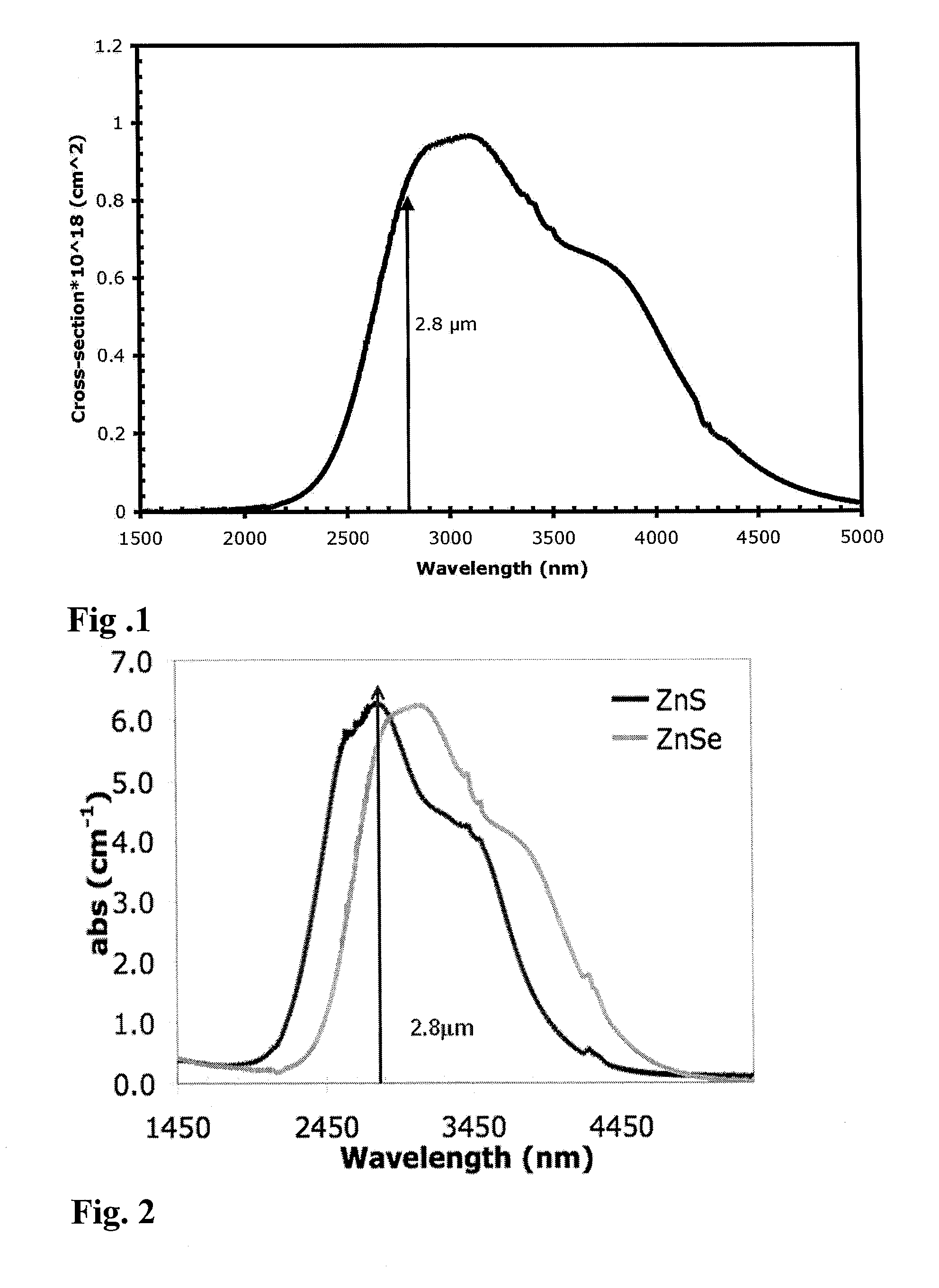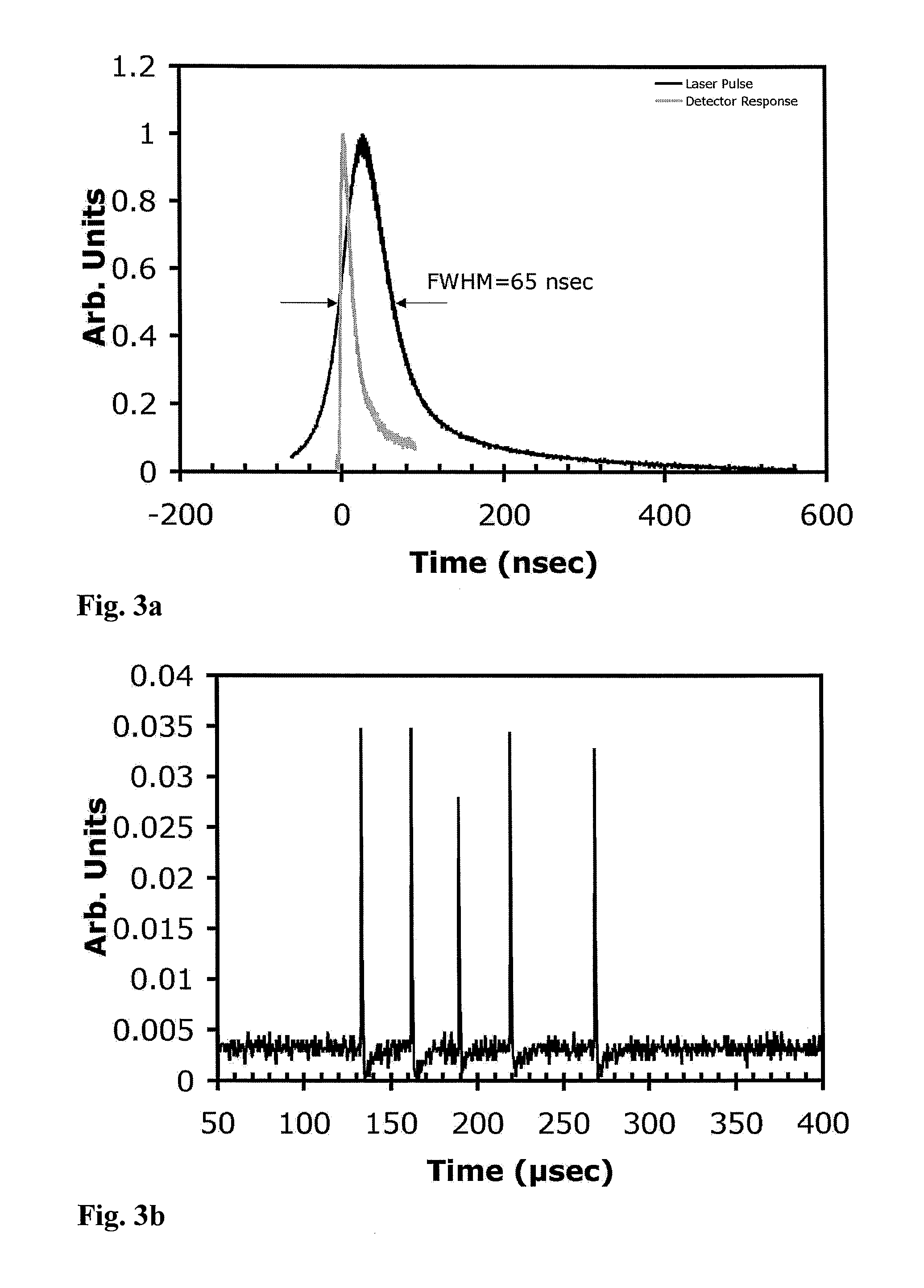Saturable absorbers for q-switching of middle infrared laser cavaties
- Summary
- Abstract
- Description
- Claims
- Application Information
AI Technical Summary
Benefits of technology
Problems solved by technology
Method used
Image
Examples
Embodiment Construction
[0015] In our experiments, the undoped polycrystalline and single crystalline samples of ZnSe were grown by chemical vapor deposition. Doping of the 1-3 mm thick ZnSe polycrystalline and single crystalline wafers was performed by after growth thermal diffusion of Fe from the metal or gas phase in quartz evacuated ampoules. Alternatively, Fe doped thin films of the ZnS and ZnSe the crystals were grown by pulsed laser deposition on ZnS / Se substrates. In addition, Fe:ZnS and ZnSe were fabricated by hot pressing of ZnS and ZnSe powders containing iron. Demirbis et al estimated the diffusion coefficient for iron and chromium ions to be 7.95×10−10 cm2 / s and 5.45×10−10 cm2 / s, respectively at 1000° C. In our preparation, the sealed ampoules were placed in a furnace and annealed at 820-1120° C. for 5-14 days. Once removed from the furnace and cooled, doped crystals were extracted from the ampoules and polished. This method of production of transition metal doped crystals is covered in U.S. P...
PUM
| Property | Measurement | Unit |
|---|---|---|
| Temperature | aaaaa | aaaaa |
| Thickness | aaaaa | aaaaa |
| Transparency | aaaaa | aaaaa |
Abstract
Description
Claims
Application Information
 Login to View More
Login to View More - R&D
- Intellectual Property
- Life Sciences
- Materials
- Tech Scout
- Unparalleled Data Quality
- Higher Quality Content
- 60% Fewer Hallucinations
Browse by: Latest US Patents, China's latest patents, Technical Efficacy Thesaurus, Application Domain, Technology Topic, Popular Technical Reports.
© 2025 PatSnap. All rights reserved.Legal|Privacy policy|Modern Slavery Act Transparency Statement|Sitemap|About US| Contact US: help@patsnap.com



